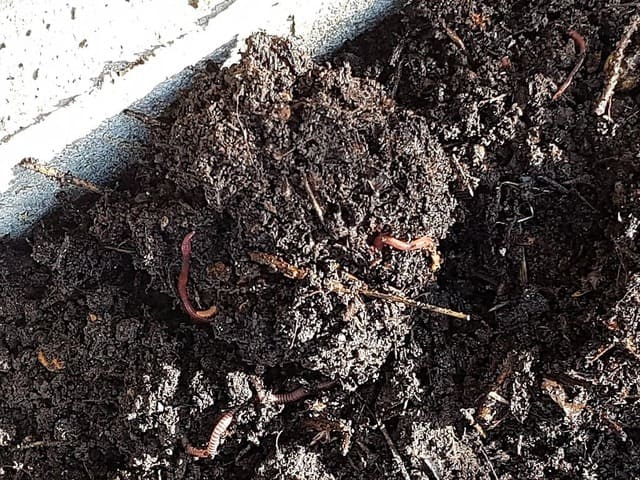One quick way to know if your worms are happy or not is to see if the worms are escaping the bin. If you take a peek inside and see some worms climbing up to the sides, then they may not like the place or the food they are having. If they are perfectly happy with things, there may be little reason for them to leave the worm bin.
Also, if you lift some food scraps up and see the worms all gather around to munch on the foods. They may form a little worm ball underneath a watermelon rind for example. Then, you know for sure these guys are happy with where they are. The whole family is enjoying it and your wormery is doing great.
In the case that the worms may not totally like their living space, let's check out some reasons why and how to make it better for them.
The Possible Reasons Why Worm Are Escaping
Environmental Changes
One reason for worm escaping is because of the environment changes. Some worms can sense the environment around them really well. And with some slight changes in barometric pressure, it might trigger the worms to evacuate.
This can happen when there's a storm coming or the weather changes too quickly, which may then shock these little guys. Blue worms are particularly quite sensitive to such climate changes.
The Bin Is Too Hot
Another possible reason why worms may not be happy with their living space is because it is too hot. The heat issue may due again to the environment. In some places like Arizona, it can get up to 114F (45C) outside on hot days.
The other cause for the heat may be because of too much food in the bin. Also, mixing in too much carbon-rich stuff like cardboard can heat up the bin quite considerably. With the carbon & nitrogen (the browns & greens) mixed together, it will start the hot composting process, which we don't want.
If you think that your worms may be unhappy because the bin may be too hot, here's how you can fix the problem:
How to Fix a Hot Worm Bin
To fix this, add either the greens or the browns on top so they won't get mixed with each other and will keep it nice and cool.
Also, try to shoot for just enough food/bedding. Around 3 inches (8 cm) of food waste layer in a 10-gallon (45 liter) tote would be fine. Some worms like it deeper like the European and African nightcrawlers.
In some worm farms, they have this deep underground soil space for each worm box. Basically, it is bottomless and connected into the ground underneath. So this is where the worms can dig themselves deep down, have a rest and it also helps keep it cool for them. They also have a roof overhead, which is also nice.
For a tote, try to increase the surface area by getting a wider/longer tote instead of a deeper tote. This helps with dissipating the heat. Putting in around 20-30% cardboard or shredded paper will be good for the worms. When you grab a ball of bedding substrate in your hand and it feels nice and cool then it's good for the worms.
When you're just dumping the food scraps in, don't put the worms in right away. Wait about 3 days for the contents to cool down a bit (because of the microbial activity in the food waste), then add your worms. Do be careful with the ants or some other animals while getting your bin prepped (waiting for the worms). It's a safe bet.
Going back to the discussion on reasons, another possible cause for unhappy worms could be:
The Bin Is Too Wet
Although worms like some moisture, if there is standing water at the bottom of the worm bin, then the worms may not like it very much.
The water may juice out from the watery fruits that we put in. So for the bottom layer of your worm house, add some dirt/compost/coco coir.
These provide some grit for the worms to grind the foods (a fun fact: the worms don't have teeth) and for them to soak up any excess water at the bottom, making it more comfortable for these wiggly guys.
Tight Spaces
Some type of worms like nightcrawlers don't enjoy confined spaces. For this reason, they may be naturally trying to get out of a bin to find more freedom.
Because worms move horizontally, a good long rectangular bin may give them some good enough space to wiggle around more happily.
Despite this downside, the good side of nightcrawlers is that they are top feeders, meaning they eat closer to the top surface of your bin (the layer of decomposing fruits or veggies that you throw in).
As they move closer to the top surface & chew the foods, their movement helps push the castings from the bottom nearer to the top. This makes it super easy to harvest their black gold. And in some places, they only need to feed the worms once a month by throwing foods on the surface.
Other wormy posts you may be interested in:
Share or pin this post!


